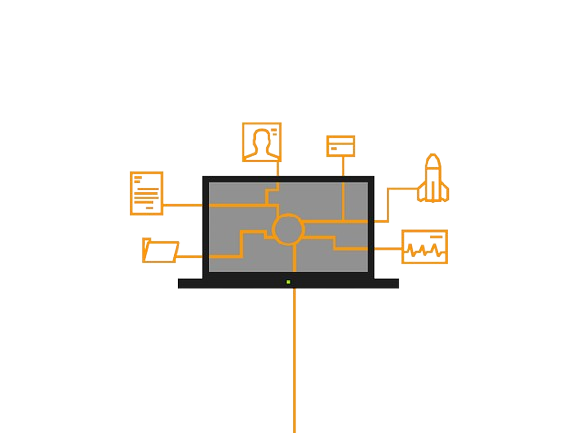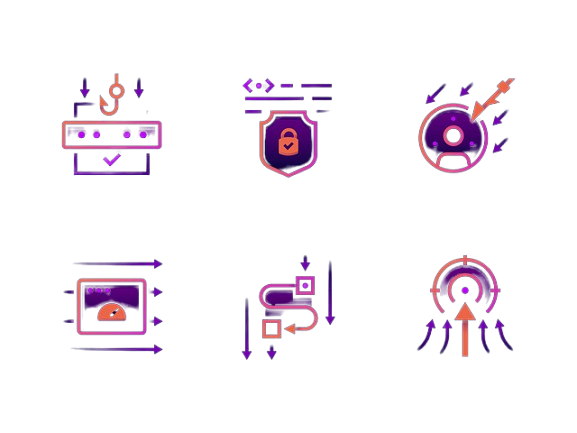
As a small business owner in today’s world, you might already know how traditional phishing and malware scams work:
- Employees or customers click on suspicious links.
- They unknowingly download harmful code.
- This code takes control of their computers.
- The creator of the code then has access to the computer’s data.
This type of malware is a real threat for both individuals and businesses. Most antivirus software can detect this malware because it’s stored on the computer. Phishing attacks are often most successful on computers that either don’t have antivirus protection or use outdated systems.
Recently, a new type of threat has emerged that worries security experts. It’s called “fileless attacks.” These attacks don’t install software on a user’s hard drive. Instead, they hijack programs that are already on the computer, using the computer’s own tools against it.
If your business computers are connected, the impact can be severe. Criminals could gain access to all your data and your customers’ data. This guide explains what fileless attacks are, why they are dangerous, and how to prevent them from affecting your small business.
How Do Fileless Attacks Work?
Fileless attacks, also known as “zero-footprint” or “non-malware” attacks, are harder to detect because they don’t involve downloading or installing files.
Here’s how they usually work:
- A user clicks on a suspicious link.
- The user is taken to a website that uses Flash or another browser tool.
- Flash opens Windows PowerShell on the computer and starts executing commands. This all happens in the computer’s memory (RAM), not on the hard drive.
- The attacker can then intercept information sent or received through the computer and perform administrative functions.
Examples of Fileless Malware (That Don’t Use Flash)
You might think, “We don’t use Flash, so we’re safe.” But fileless malware can exploit vulnerabilities in browsers, Microsoft products, and other tools.
The problem remains the same: fileless attacks hijack legitimate software already on the user’s computer. Since the malicious code exists only in memory, antivirus software might not detect it. Fileless attacks can also bypass whitelisting, where administrators approve which apps can be installed.
Worse, if one computer on a network is infected, other connected computers might also be at risk. Even if you avoid suspicious links, your machine could be in danger if someone you know gets hit by a fileless attack.
Fileless Attack Detection and Prevention Strategies
Fileless attacks are concerning because they are very effective:
- Without locally-stored files, detecting new fileless malware is challenging.
- Once one networked computer is infected, the damage can quickly spread to other machines.
According to the Ponemon Institute, fileless attacks are 10 times more likely to succeed than file-based attacks. In 2020, fileless attacks increased by a huge 900%.
Cybersecurity methods are still catching up to this threat. While no system is completely immune, there are some strategies you can use to reduce your risk and protect your business.
1. Don’t Click on Suspicious Links
This tip sounds simple but can be tricky. Suspicious links often look legitimate. Criminals are skilled at making their emails, websites, and messages seem real. For example, an email with the subject line “Common Fileless Malware Examples and How to Stop Them” might seem harmless but could lead to a dangerous website if sent by a hacker.
2. Keep Your Devices Up-to-Date
Always use the latest version of your operating system and install updates and patches when available.
3. Disable Non-Essential Tools
On Windows machines, disable PowerShell, Windows Management Instrumentation, and macros unless they are essential for your business. These tools are provided by Microsoft but are also vulnerable to fileless attacks.
4. Monitor Your Network’s Traffic
This helps with detection. Watch for sudden spikes in network activity that your team can’t explain. Such changes might indicate unauthorized access to your machines.
5. Implement the ‘Principle of Least Privilege’
Limit each employee’s access to only what they need to do their job. For example, lower-level staff might not need administrative privileges if they only work with data entry.
6. Consider Third-Party Solutions
Antivirus programs may not be good at detecting or preventing fileless attacks. Look into third-party solutions that offer additional protection. Do your research to find a reliable option.
A Final Tip on Fileless Malware Protection
Fileless attacks are tough to detect and stop, especially if you don’t have IT and security expertise. No operating system is completely safe from fileless attacks, but following the tips above can help reduce your risk. To learn more about how Clover protects its merchants from cyber fraud, contact a Business Consultant today.

Hi, I’m Chibuzor Abraham from Nigeria. I love technology, especially VPNs, which protect your online privacy. I manage Ohiovpn.us, where I review VPN services for Ohio. Our reviews look at speed, security, and ease of use to help you find the best VPN. If you buy through our links, we get a small commission, which helps support our site at no extra cost to you.

